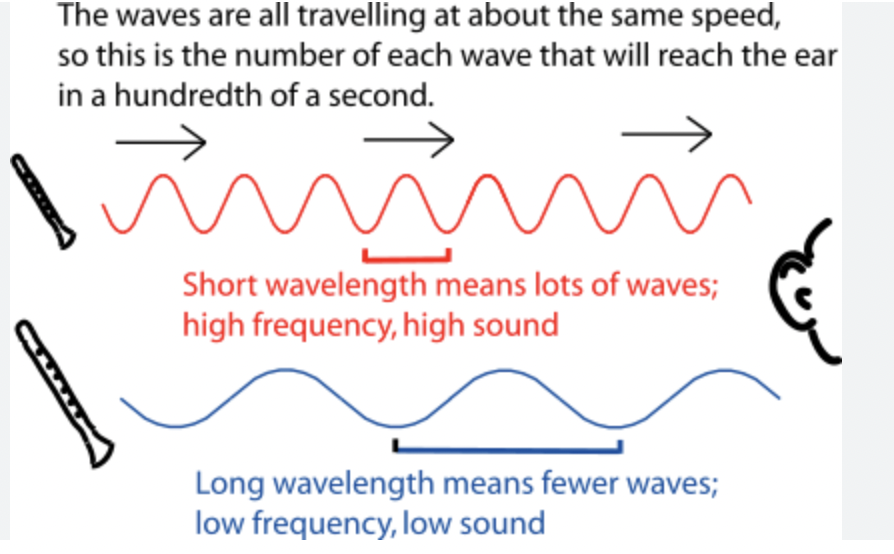Light - Physics (Year 9)
5.0(1)
5.0(1)
Card Sorting
1/35
Earn XP
Study Analytics
Name | Mastery | Learn | Test | Matching | Spaced |
|---|
No study sessions yet.
36 Terms
1
New cards
Light
Light is a type of __electromagnetic radiation__ (ENERGY) that allows the human eye to see or makes objects __visible__. Light is actually a beam of energy called a __ray__.
2
New cards
Light Energy
The energy carried by light waves.
3
New cards
Light Ray
A light ray refers to a narrow beam of light that travels in a straight line. It is often used as a simplified representation of the path that light follows. Light rays are used to describe the behaviour of light when it interacts with objects or travels through different mediums.
4
New cards
Speed of Light
In a vacuum light moves at the speed of light: 299,792,458 metres/s (approx 300,000km/s)
5
New cards
Transparent
Transparent materials let almost all light through. It is transmitted.
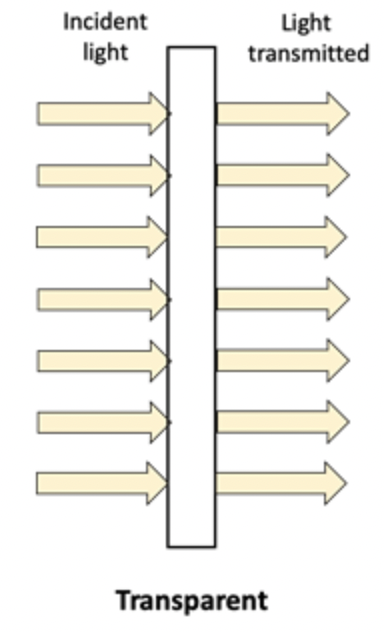
6
New cards
Translucent
Translucent materials only allow some of the light through. It is transmitted and refracted/bent at different angles.
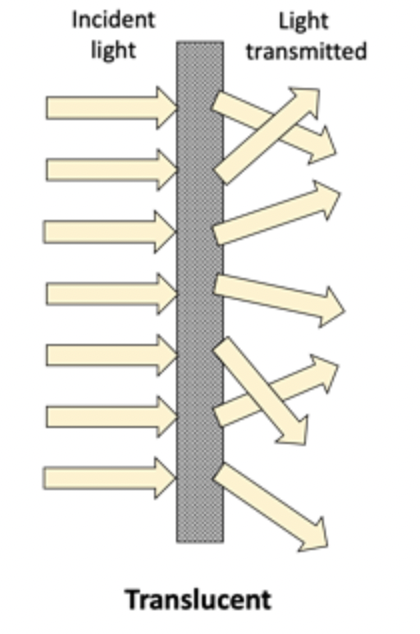
7
New cards
Opaque
Opaque materials don’t allow any light through. It is absorbed or reflected.
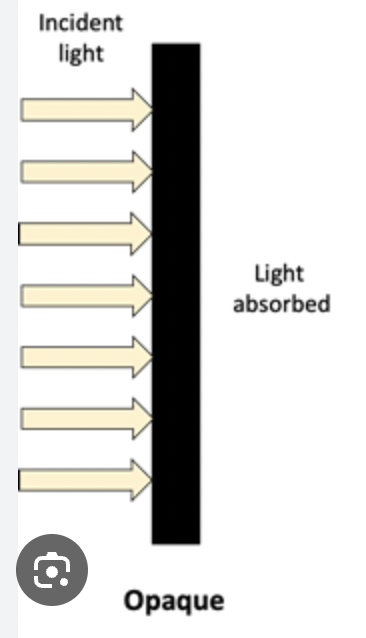
8
New cards
Luminous
Emits/creates their own light.
9
New cards
Non-Luminous
Does not emit light, they will absorb or reflect light.
10
New cards
Angle of Incidence (i)
The angle of Incidence is when light rays approach a surface, the angle between the incident ray (incoming ray) and the normal is known as the angle of incidence. It is measured with respect to the normal line.
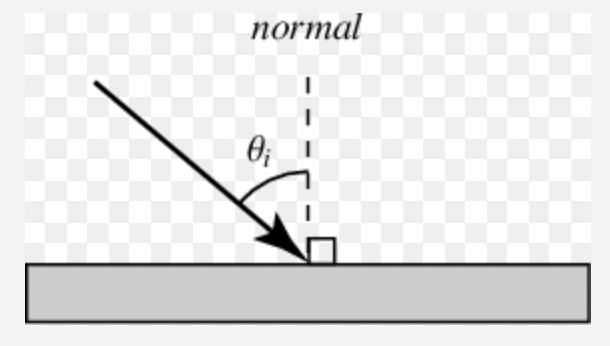
11
New cards
Angle of Reflection (r)
The angle of Reflection is when light rays bounce off a surface, the angle between the reflected ray (outgoing ray) and the normal is called the angle of reflection. According to the law of reflection, the angle of incidence is equal to the angle of reflection, both measured relative to the normal line.
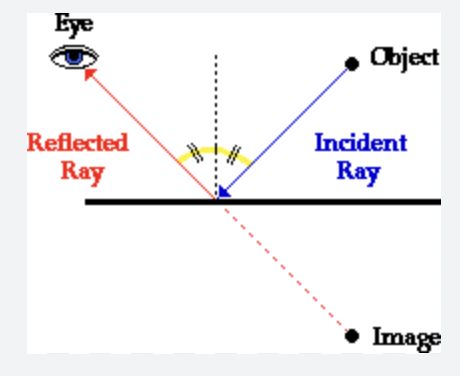
12
New cards
Angle of Refraction (r)
The angle of Refraction is when light passes through a boundary between different transparent media, such as from air to water, the angle between the refracted ray (the ray that bends) and the normal is known as the angle of refraction. It is determined by the refractive indices of the media and is governed by Snell's law.
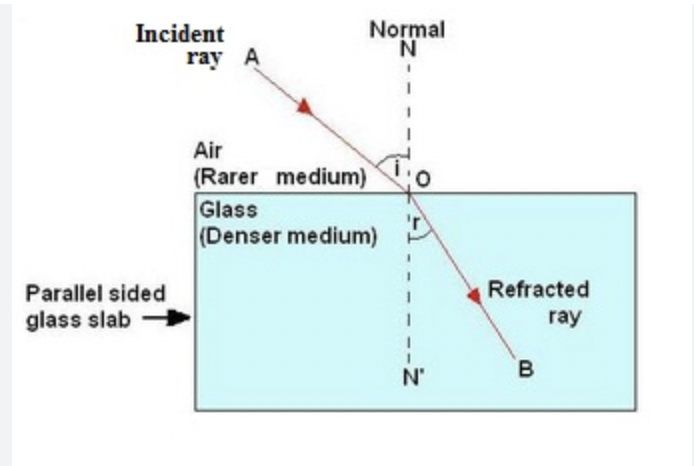
13
New cards
Critical angle
The critical angle is the angle of incidence where the angle of refraction is 90°.
The light must travel from an optically more dense medium to an optically less dense medium.
The light must travel from an optically more dense medium to an optically less dense medium.
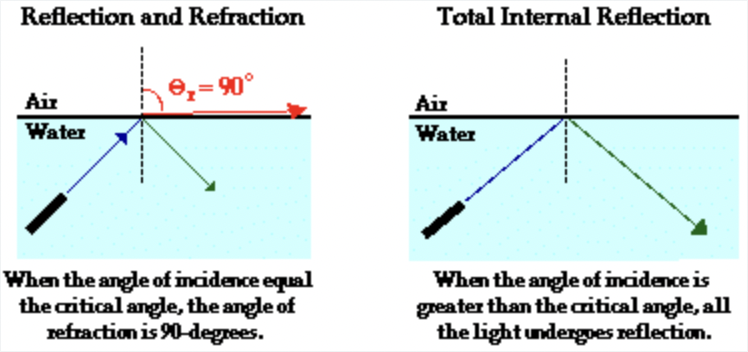
14
New cards
Emergent Ray
An emergent ray refers to a ray of light that has undergone transmission through a boundary between two different mediums. It is the ray that emerges or comes out from the boundary after interacting with the interface.
The emergent ray may experience changes in direction and other properties depending on the angle of incidence and the properties of the mediums involved.
The emergent ray may experience changes in direction and other properties depending on the angle of incidence and the properties of the mediums involved.
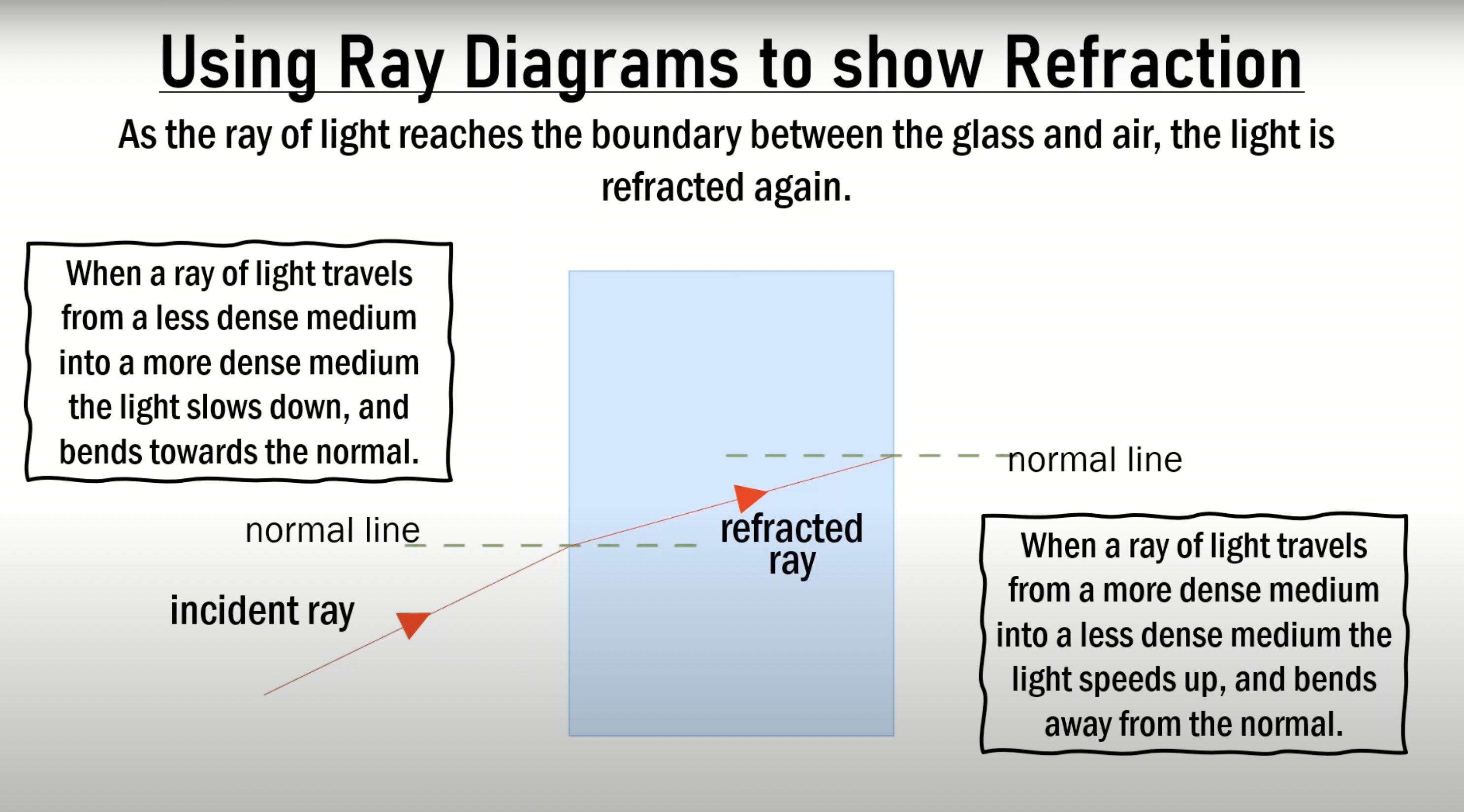
15
New cards
Incident Ray
\n An incident ray refers to a ray of light that is approaching or striking a surface or interface between two different mediums. It is the ray of light that is incident or incoming onto the boundary.
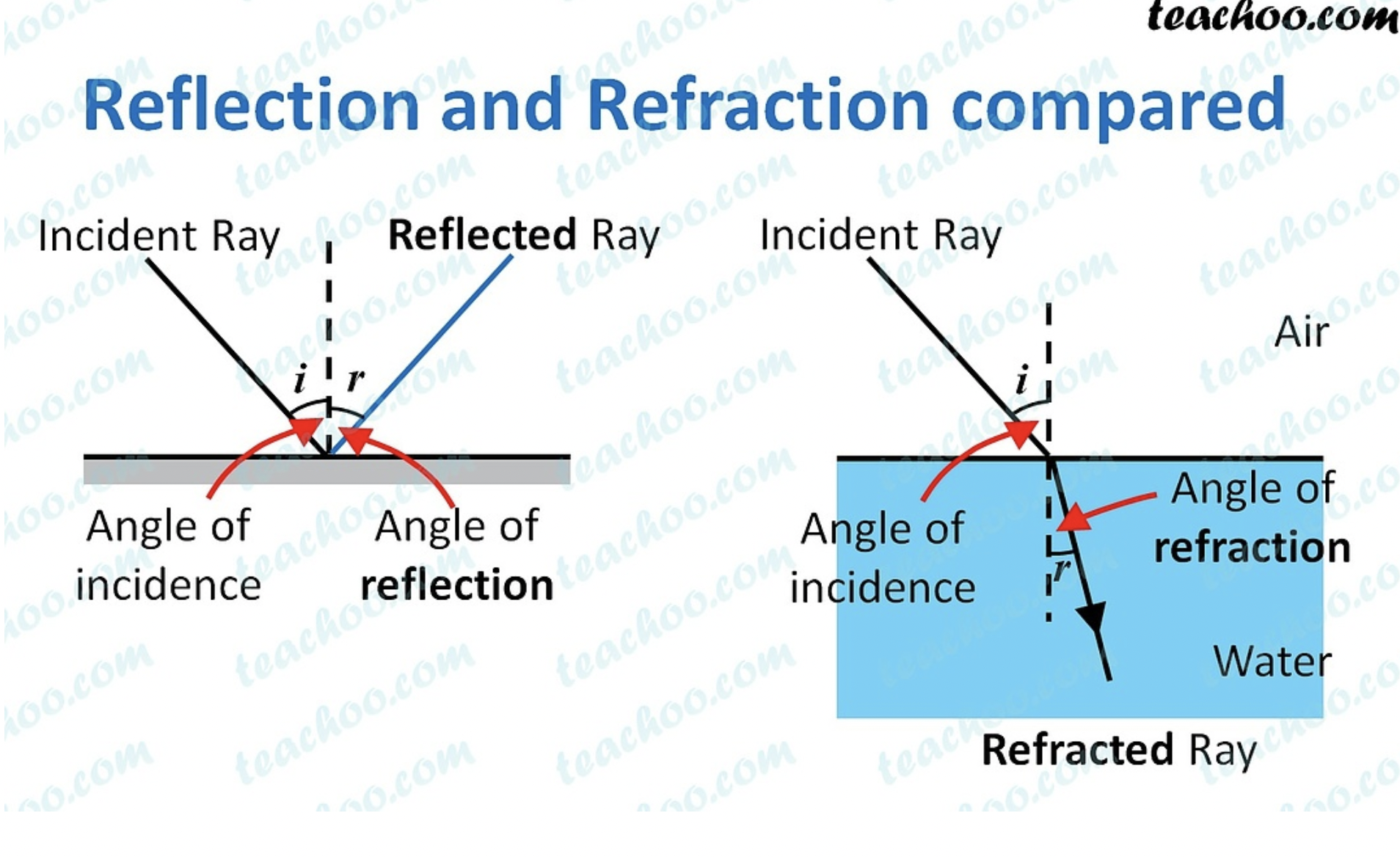
16
New cards
Reflected Ray
A reflected ray refers to a ray of light that has bounced off a surface after striking it. It is the ray that reflects or bounces back from the surface. (Image shows rough vs smooth surface)
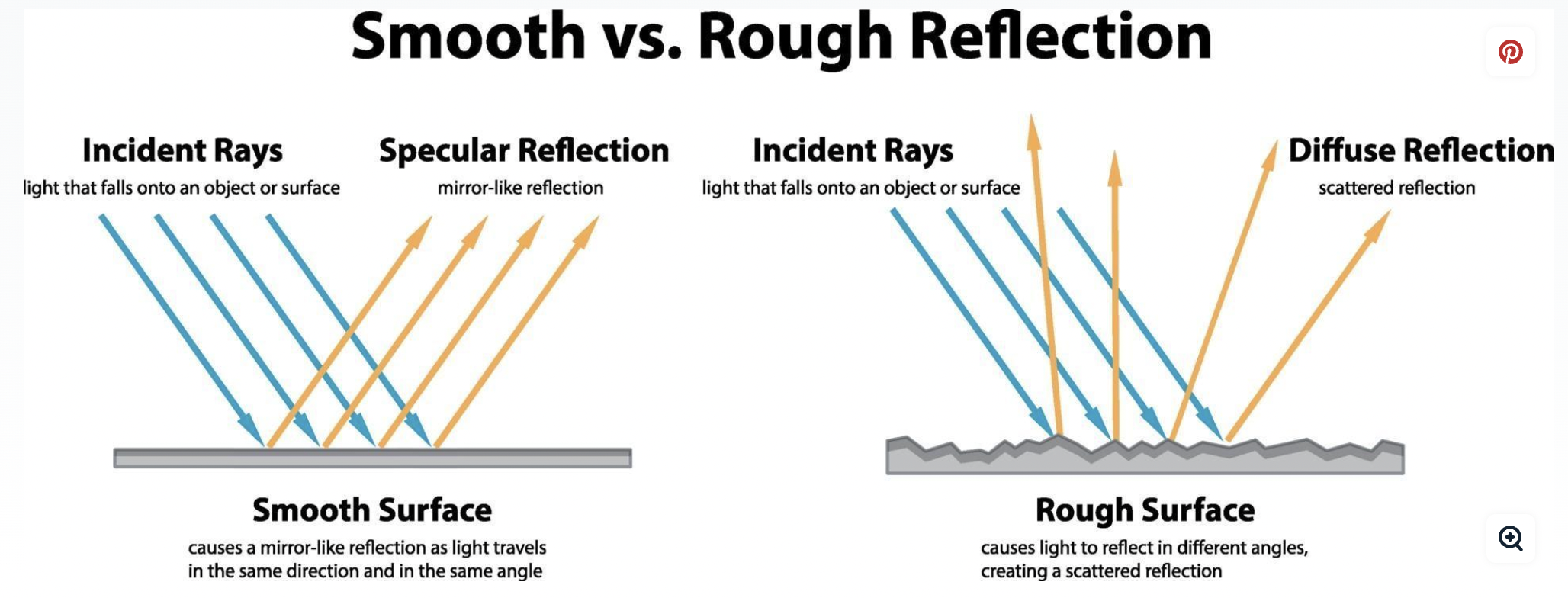
17
New cards
Refracted Ray
Refracted ray is the ray which has entered the second medium and bent either away from the normal or towards the normal depending on the density of the new medium in comparison to the old one.
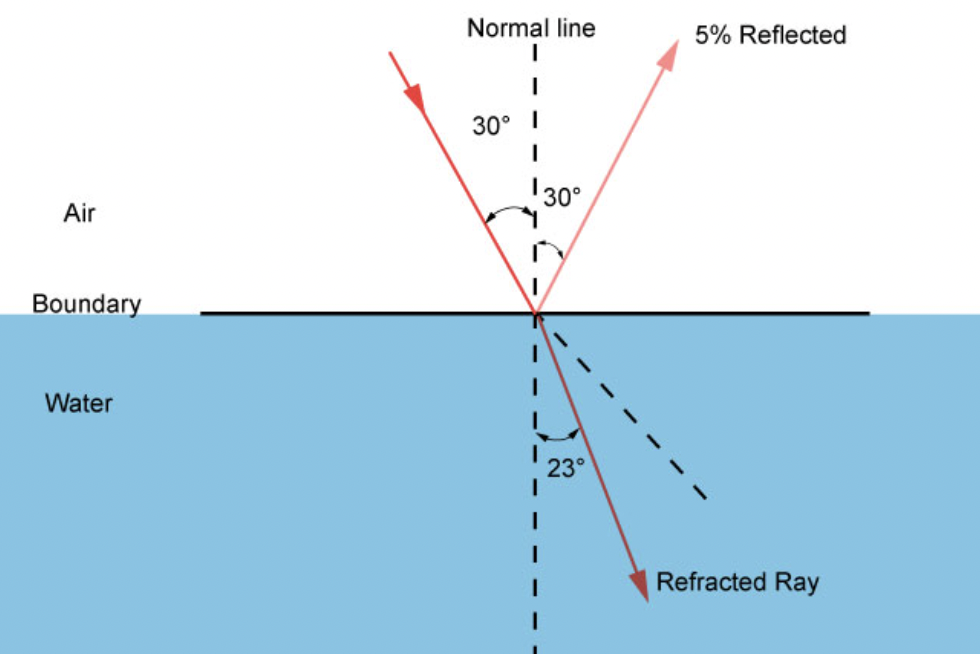
18
New cards
Law of Reflection
The law of reflection is a fundamental principle in optics that describes the behaviour of light when it reflects off a surface. It states that the angle of incidence (θi) is equal to the angle of reflection (θr), both measured with respect to the normal line (a line perpendicular to the surface at the point of incidence).
θi = θr
θi = θr
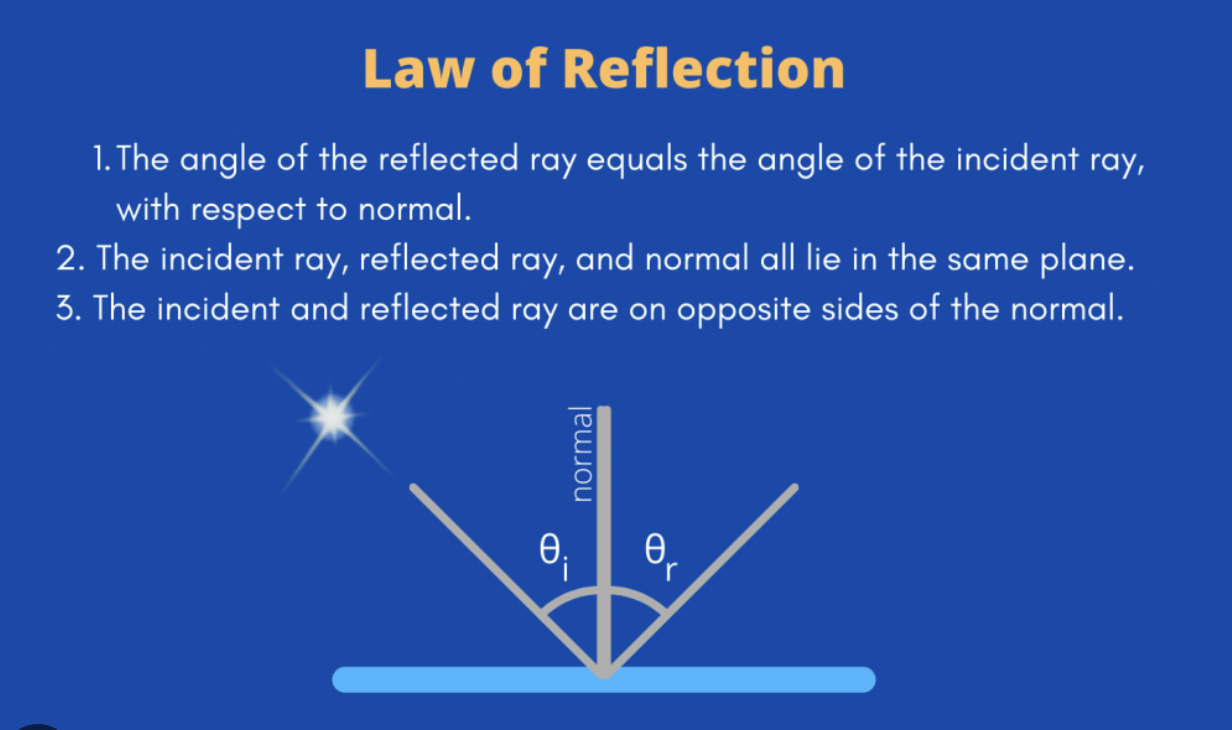
19
New cards
Normal
The normal refers to a line that is perpendicular (at a 90-degree angle) to a surface at a specific point of incidence. The normal line is drawn or imagined to be extending straight out from the surface.
20
New cards
Plane Mirror
A plane mirror is a smooth or highly polished surface that reflects light in order to form an image. It is a flat, polished, and reflective surface that produces a virtual image of the real object. Moreover, a light ray passing through the plane mirror must make the angle of reflection equal to the angle of incidence.
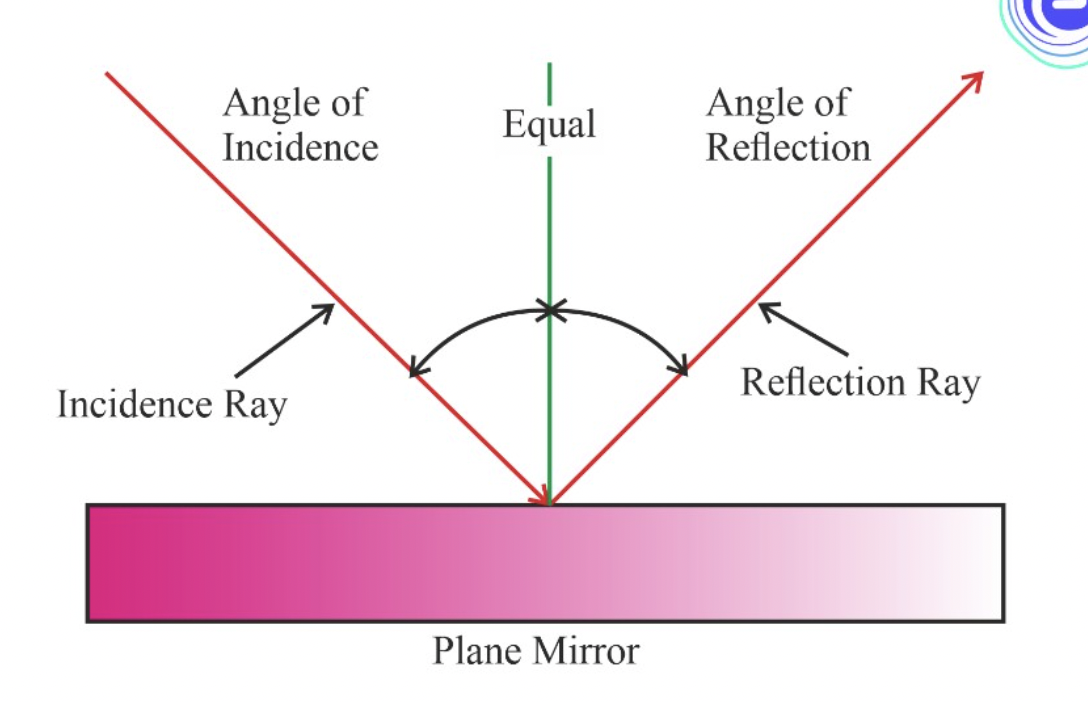
21
New cards
Reflection
Reflection refers to the phenomenon where light or any other form of electromagnetic radiation bounces off a surface or boundary upon striking it. When a light wave encounters a reflective surface, a portion of the incident light is reflected back into the same medium from which it originated.
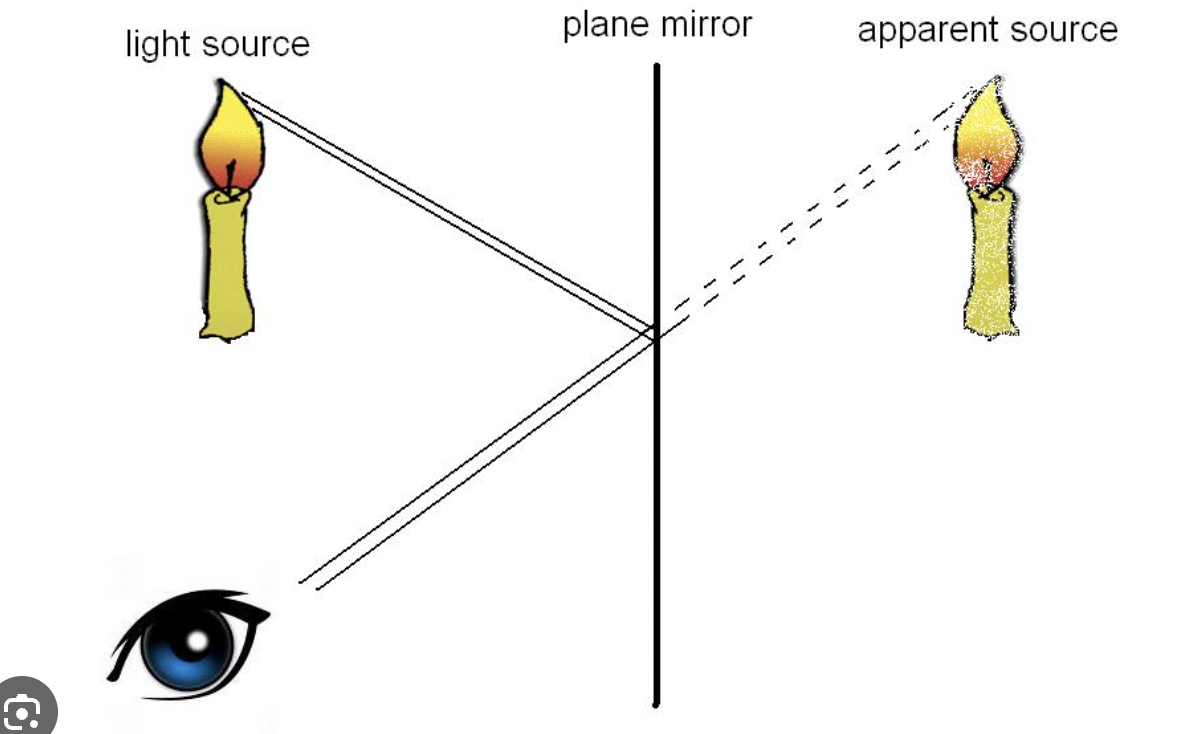
22
New cards
Refraction
Refraction refers to the bending or change in direction of a wave, such as light or sound, as it passes from one medium to another. This bending occurs due to a change in the wave's speed as it transitions from one medium to another with a different optical density.
23
New cards
Refractive Index
The refractive index is a measure of how much a particular material or medium can bend or refract light. It quantifies the degree to which the speed of light changes when it travels from one medium to another.
The refractive index of a medium is typically denoted by the symbol "n" and is defined as the ratio of the speed of light in a vacuum (or air) to the speed of light in the given medium.
\
Higher refractive index → Refracts more
The refractive index of a medium is typically denoted by the symbol "n" and is defined as the ratio of the speed of light in a vacuum (or air) to the speed of light in the given medium.
\
Higher refractive index → Refracts more
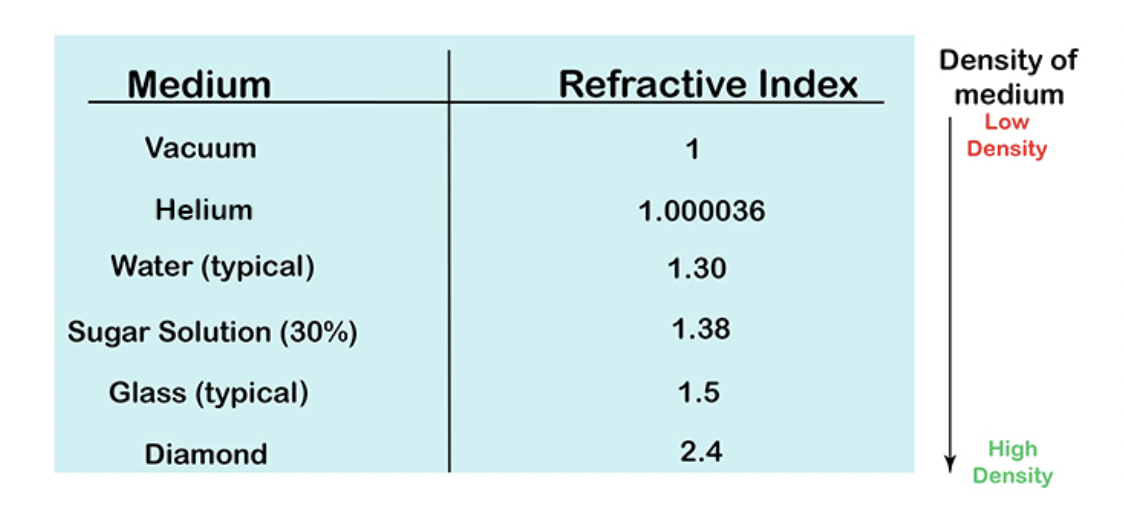
24
New cards
Total Internal Reflection (TIR)
Complete reflection of a ray of light within a medium such as water or glass from the surrounding surfaces back into the medium. The phenomenon occurs if the angle of incidence is greater than a certain limiting angle, called the critical angle.
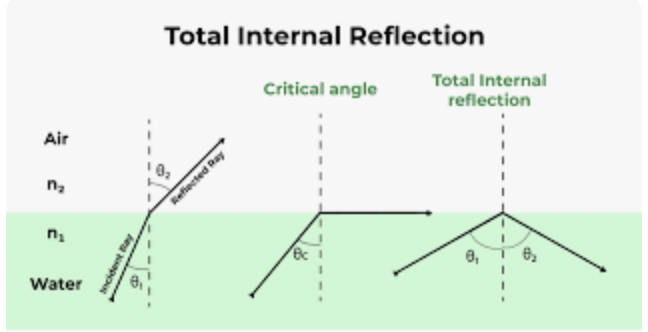
25
New cards
Wavelength
The wavelength of a wave describes how long the wave is; the distance between identical points (adjacent crests) in the adjacent cycles of a waveform signal propagated in space or along a wire.
Shorter wavelength = More dangerous, hotter, higher frequency, higher refractive index
Shorter wavelength = More dangerous, hotter, higher frequency, higher refractive index
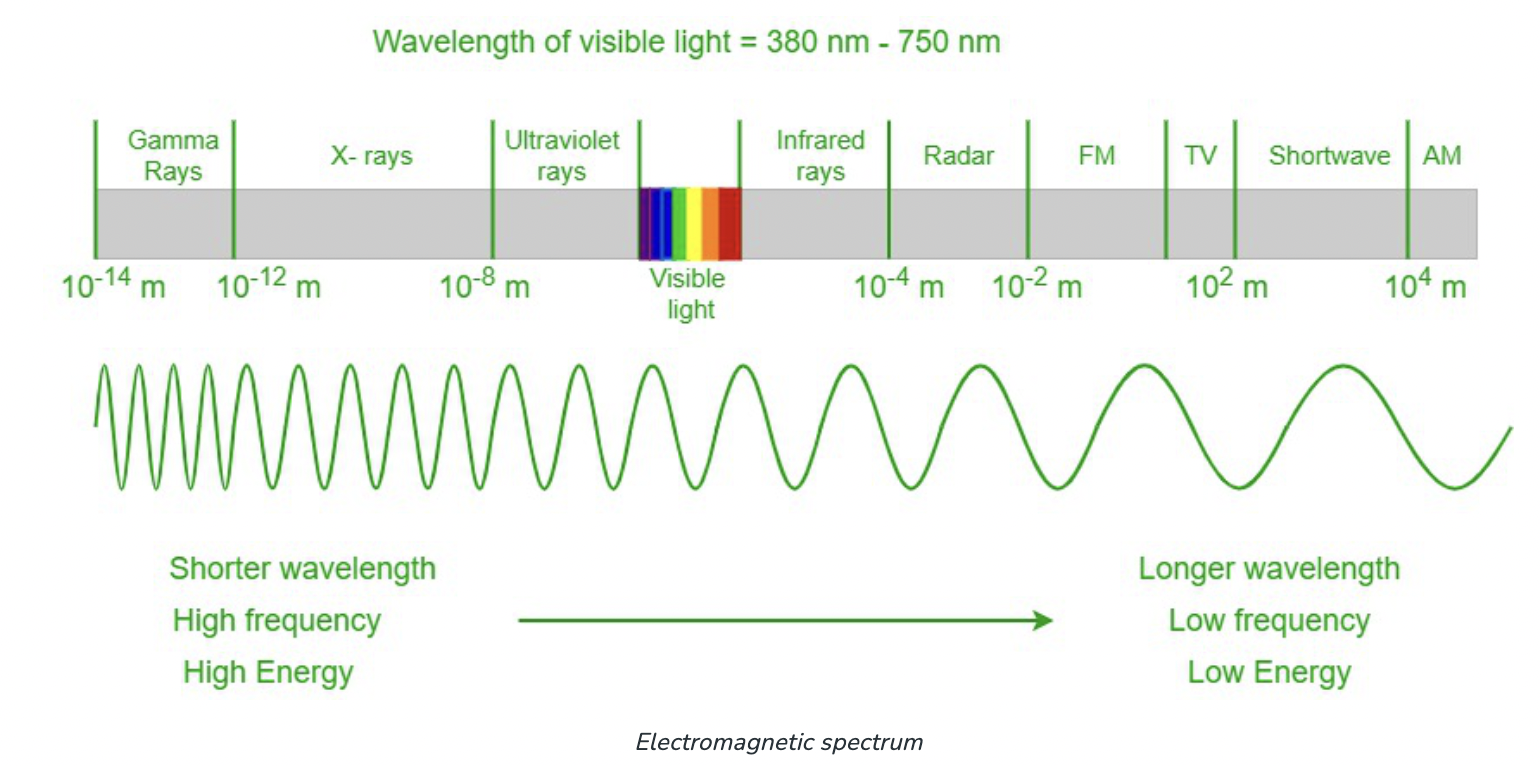
26
New cards
Dispersion
When white light is passed through a glass prism it splits into its spectrum of colours (in order violet, indigo, blue, green, yellow, orange and red) and this process of white light splitting into its constituent colours is termed as dispersion.

27
New cards
White Light/Visible Light
White light refers to the visible light that appears colourless or as a combination of all visible colours. It is the light that is typically produced by a light source such as the Sun or a light bulb.
White light is a combination of all colours in the colour spectrum. It has all the colours of the rainbow.
White light is a combination of all colours in the colour spectrum. It has all the colours of the rainbow.

28
New cards
Electromagnetic Spectrum
The electromagnetic spectrum is the entire range of wavelengths of all known electromagnetic radiations.
* shorter wavelength → more dangerous, frequency higher (faster), higher refractive index (refract more)
* longer wavelength → safer, frequency lower (slower), lower refractive index (refract less)
* shorter wavelength → more dangerous, frequency higher (faster), higher refractive index (refract more)
* longer wavelength → safer, frequency lower (slower), lower refractive index (refract less)
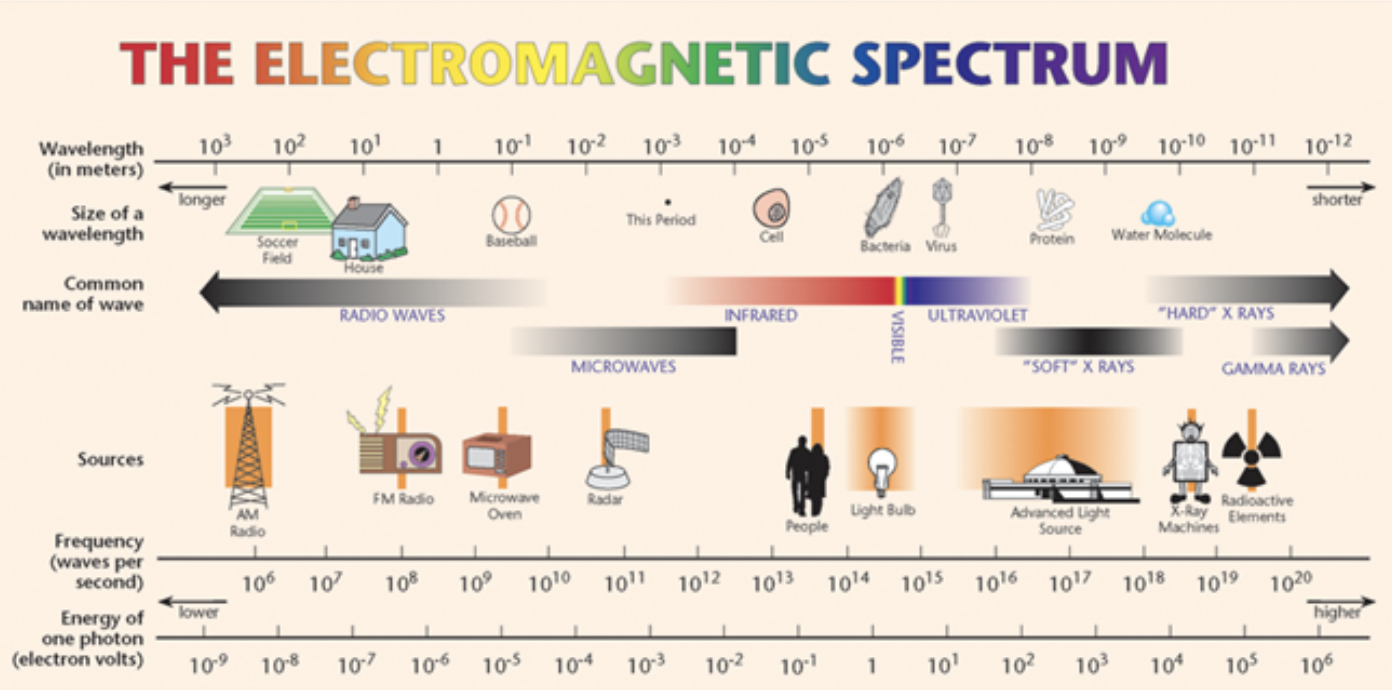
29
New cards
Ray Diagram
A ray diagram is a representation of the possible paths light can take to get from one place to another.
This is often from a source or object to an observer or screen.
This is often from a source or object to an observer or screen.
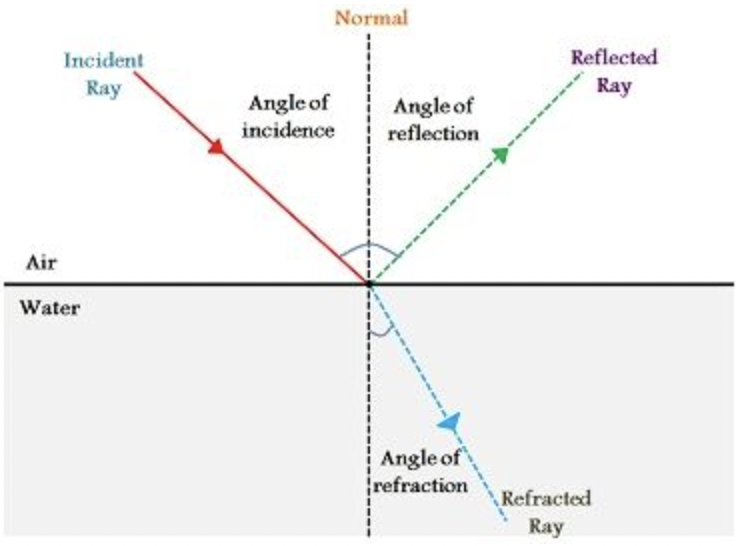
30
New cards
Absorbed
* turned into heat
31
New cards
Reflected
* bounced off
32
New cards
Transmitted
* passes through
33
New cards
Light → More Dense (what happens)
the light ray:
* bends towards the normal
* the light ray slows down
* bends towards the normal
* the light ray slows down
34
New cards
Light → Less Dense (what happens)
the light ray:
* bends away from the normal
* increases in speed
* bends away from the normal
* increases in speed
35
New cards
Amplitude (optional)
Amplitude is the distance between the resting position and the maximum displacement of the wave.

36
New cards
Frequency (optional)
Frequency is the number of waves that pass a fixed point in unit time
